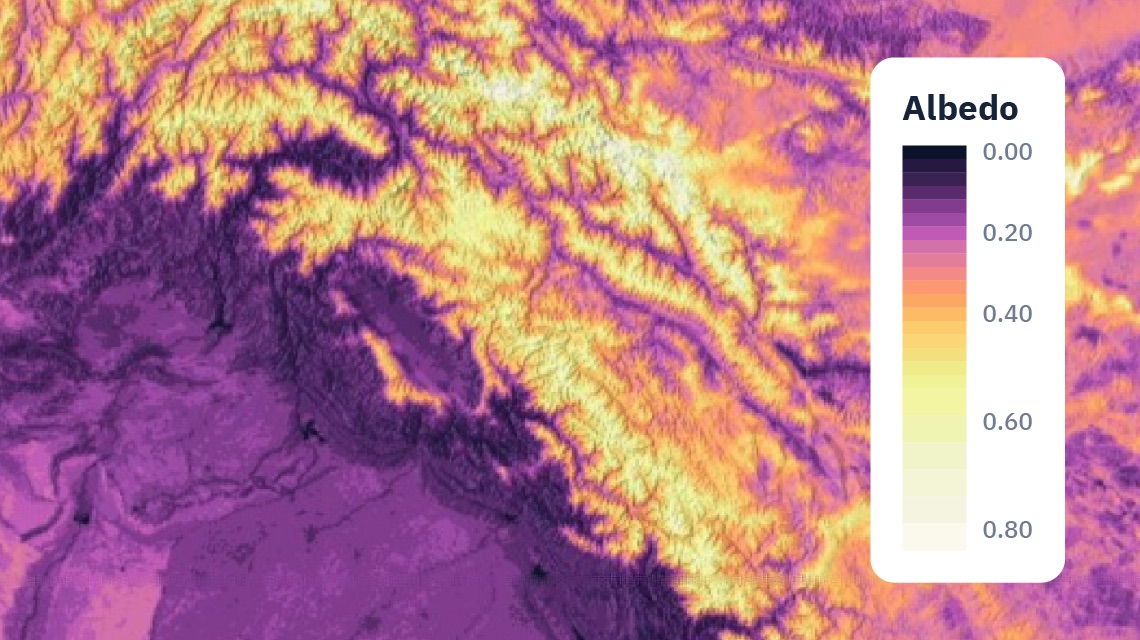





Solar power plants need to adapt to complex local environmental and terrain conditions.
Site designs and structures must be configured not only to make the most of the solar resource, but also to account for surrounding objects and infrastructure – such as roads, hills, buildings and the electrical grid.
Solargis data and software give you the necessary insights to evaluate the options and determine the best possible setup for your plant.

Bifacial PV modules require new computational concepts based on location-specific high-resolution albedo data.
Meanwhile, floating PV power plants come with new challenges such as wave impact and microclimate conditions above the water surface, including vapor, humidity, fog, temperature, and wind.
You can address all these challenges with Solargis simulations.
A solar power plant is a long-term project for 30+ years. To ensure its efficient operation over such a long period, you need to consider potential long-term risks, even if they occur infrequently.
Solargis simulations can help you design a resilient project – by studying risks and local extreme weather conditions such as the lowest air temperatures, soiling, hail, snowfall, wind gusts, and others.
The PV Variability & Storage Optimization Study delivers statistical data and insights to project developers needed for designing and managing PV-plus-storage systems.
The study provides the most realistic data on PV power generation for grid integration analysis.
Solargis Typical Meteorological Year API (TMY API) provides access to a comprehensive solar model of TMY data for locations all over the world.
Get direct access to Solargis TMY data in your energy simulation software via API.
Our expert team gives actionable tips on how to avoid the negative surprises of extreme weather and shares some of our customers' best practices.
To design optimal PV projects, designers must consult 1-minute data which paint the most accurate picture of a plants’ PV power potential and output, while providing increased financial certainty to solar investors.
Ten years ago, an average solar PV project was a relatively simple affair, comprising 10MW of fixed, monofacial modules. The market has moved on a long way since then. Now, typical solar farms approach 100MW in size and may use a range of technologies such as bifacial, intelligent tracking and floating modules, creating new possibilities for more efficient energy production.
Projects supported by our bankable solar & meteo data, software, and services every year
Years of experience with solar projects and improving industry standards
Coverage of the world’s population with 30 years of solar and meteorological data





